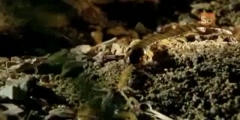Lec 6 - Smallpox (I): 'The Speckled Monster'
"Lec 6 - Smallpox (I): 'The Speckled Monster'"Epidemics in Western Society Since 1600 (HIST 234) In the eighteenth century, smallpox succeeded plague as the most feared disease. The two maladies, however, are very different. While plague is a bacterial disease, smallpox is viral. Plague is spread by rats and fleas, smallpox is transmitted by contact and airborne inhalation. Unlike plague, smallpox can exist as an endemic as well as an epidemic disease. The dread of smallpox was a result of its agonizing and unpleasant symptoms, which, in the case of survival, often left victims permanently disfigured. Prior to the discovery and successful implementation of inoculation and vaccination regimes, a host of ineffective and often dangerous treatments were attempted, including bleeding, purging, and cauterization of affected areas. 00:00 - Chapter 1. Smallpox 09:13 - Chapter 2. Etiology 16:49 - Chapter 3. Transmission and Epidemiology 22:32 - Chapter 4. Symptomatology 41:14 - Chapter 5. Remedies Complete course materials are available at the Open Yale Courses website: http://open.yale.edu/courses This course was recorded in Spring 2010.
Here is the next lecture for this course
Hubble sees magnetic monster in erupting ...
04:43 | 6090 viewsLec 33 - Clearing the Green Monster at Fenway
09:30 | 3382 viewsLec 34 - Green Monster at Fenway Part 2
12:30 | 3232 viewsLec 7 -Smallpox (II): Jenner, Vaccination ...
50:34 | 2985 viewsMonster Bug Wars - The Tent Spider
02:09 | 8536 viewsAssassin Bug the Monster Bug Wars
02:33 | 4163 viewsOgre vs Assassin- Monster
02:18 | 2723 viewsMonster Bug Wars: The Fearless Tree Scorpion
01:59 | 4467 viewsSuper Model of the Spider World in Monste ...
02:07 | 4471 viewsGiant Rainforest Mantis - Monster Bug Wars
01:51 | 4751 viewsScorpion vs. Centipede Fight by Monster B ...
02:53 | 6548 viewsMonster Ogre-Faced Spider
02:55 | 3635 viewsTrapdoor Spider in Monster Bug Wars
02:41 | 7375 viewsMonster Bug Wars Spider VS Ant
03:02 | 4921 viewsMonster Mantis Crab And Spider
03:41 | 3756 viewsNo content is added to this lecture.
This video is a part of a lecture series from of Yale
Lecture list for this course
Lec 1 - Introduction to the Course - Epidemics in Western Society
Lec 2- Classical Views of Disease: Hippocrates, Galen, and Humoralism
Lec 3 -Plague (I): Pestilence as Disease
Lec 4 - Plague (II): Responses and Measures
Lec 5 - Plague (III): Illustrations and Conclusions
Lec 7 -Smallpox (II): Jenner, Vaccination, and Eradication
Lec 8 - Nineteenth-Century Medicine: The Paris School of Medicine
Lec 9 - Asiatic Cholera (I): Personal Reflections
Lec 10 -Asiatic Cholera (II): Five Pandemics
Lec 11- The Sanitary Movement and the 'Filth Theory of Disease'
Lec 13 - Contagionism versus Anticontagionsim
Lec 14 -Tropical Medicine as a Discipline
Lec 15 - The Germ Theory of Disease
Lec 16 - Malaria (I): The Case of Italy
Lec 17- Malaria (II): The Global Challenge
Lec 18- Tuberculosis (I): The Era of Consumption
Lec 19- Tuberculosis (II): After Robert Koch
Lec 21- The Tuskegee Experiment
Lec 24 -Poliomyelitis: Problems of Eradication
Lec 25 -SARS, Avian Inluenza, and Swine Flu: Lessons and Prospects















